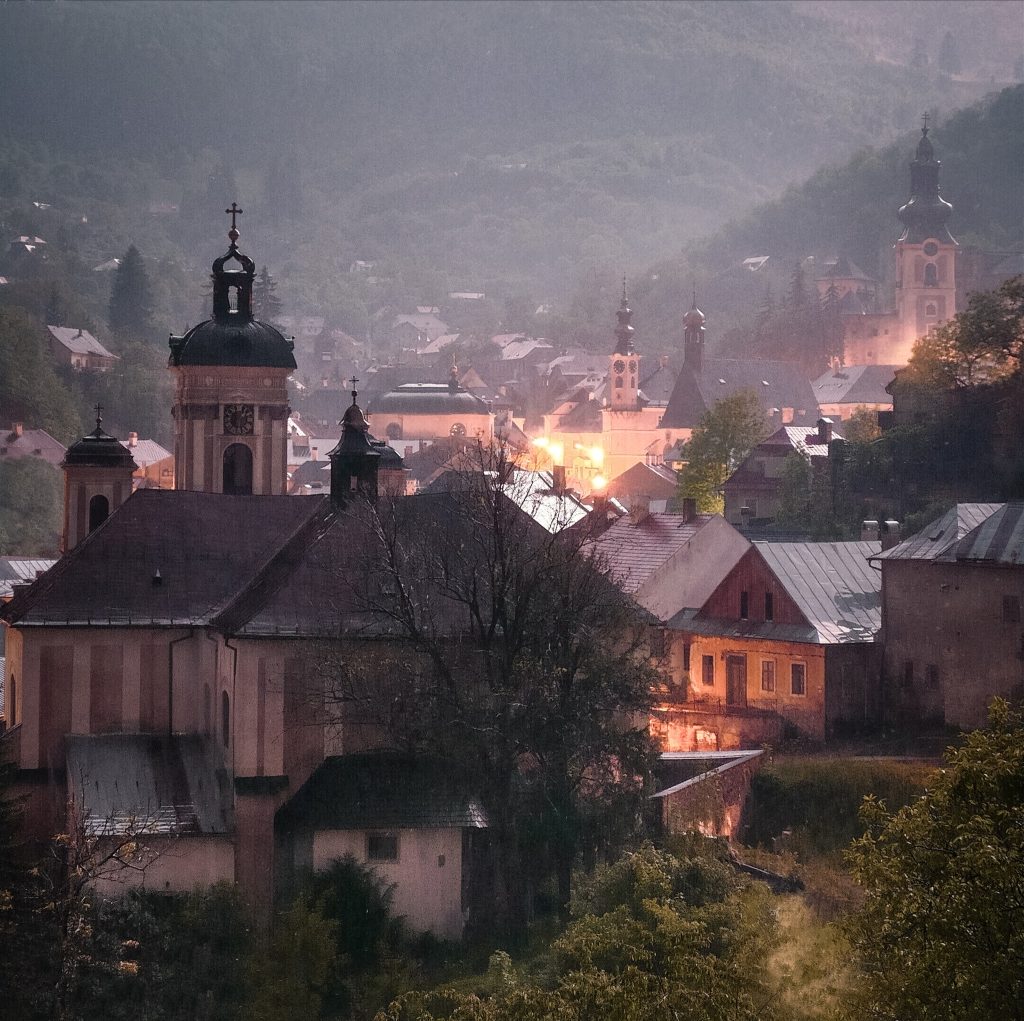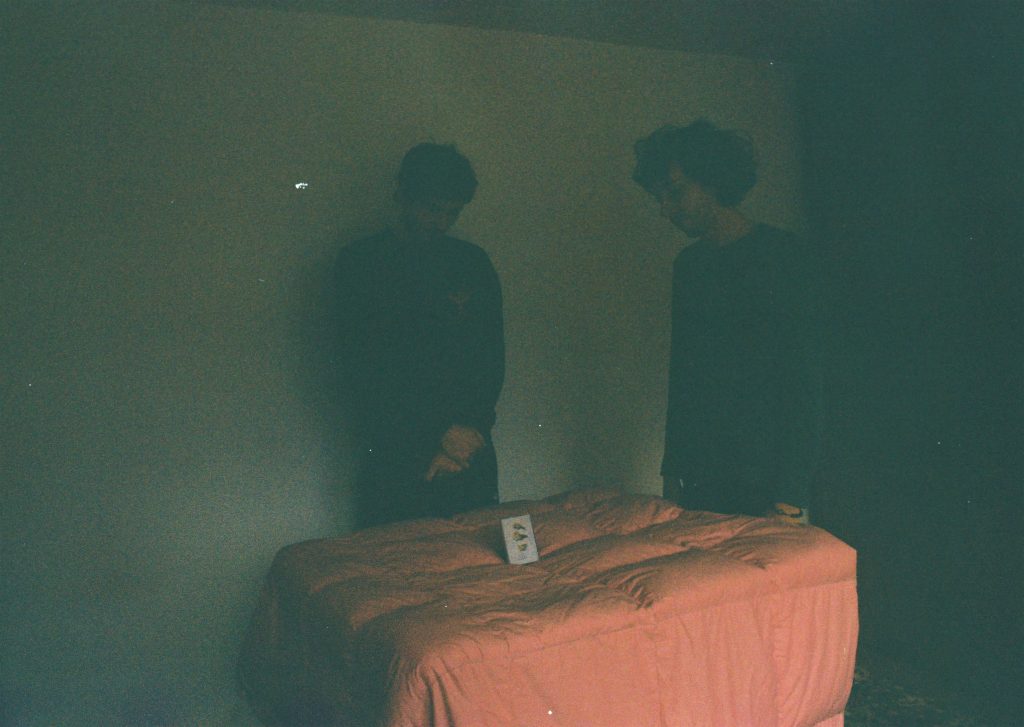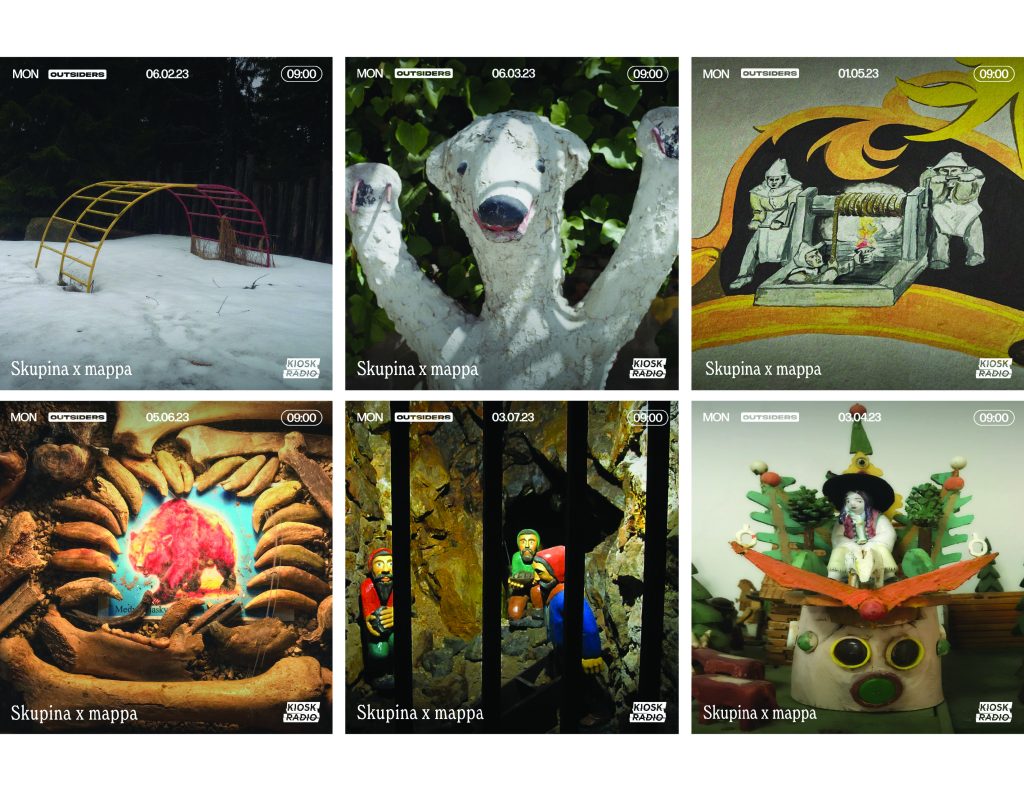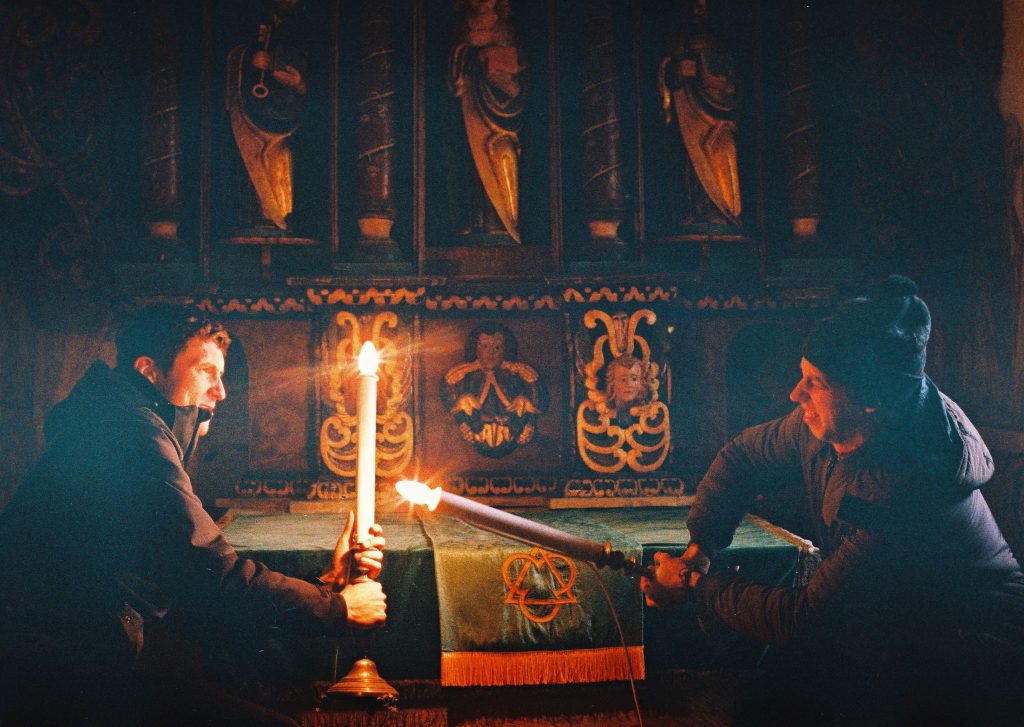With mappa on the fluid boundaries between fictional and real sound worlds
Published May, 2024
by Easterndaze

Between Lučenec and Banská Štiavnica, Jakub Juhás, founder of the mappa label, forms soundscapes that naturally wander between the real and the fictional. Be it sonic ecosystems of ponds or eclectic electronics drowned in the meditative sound of organs. Jakub’s curatorial practice does not dwell on sonic similarity, he turns his interest to the search for possible connections and deeper relationships.
Ján Solčáni: Can you briefly introduce the mappa label and its beginnings? What do you see as the common denominator overarching the label’s catalogue?
Jakub Juhás: Mappa was founded in 2016 in Lučenec, a small town in the south of Slovakia, and its content is based on my personal listening perspective. From the beginning it was important for me to uncover new soundscapes and listener interactions that were completely unknown and difficult for me to access. An example of this is the Mardle: Daily Rhytms of a Pond series of field recordings revealing the underwater worlds of ponds. At the same time, I try to present fictional sound worlds that are more speculations about place, landscape, and the specific, personal, often imaginary listening experience. I like to blur the boundaries between these worlds, thus making the listener uncomfortable and showing the fluid parallels between these worlds and their stories.
I know you as someone who spends a lot of time in a landscape in which you enjoy a certain position of stasis. From there you perceive microscopic changes that happen over longer periods of time. Is this way of looking at the world mirrored in your approach to running a label?
I’ve been an avid listener since I was a kid. I’ve never played anything, but I’ve devoted a significant part of my life to listening and later to sensitizing myself to it. Today I use this experience in mappa, where I work as a curator of various sound worlds. Through them I try to increase the scale of the label’s scope. I don’t want to impose a certain narrative. I want to compose stories that are interconnected, blurring the boundaries between the fictional and the real, the personal and the natural, the audible and the seemingly inaudible, the organic and the synthetic… I’m just a collector of all sorts of sound stories that shouldn’t be left forgotten and unheard. This is the meaning of curating for me.
What do you see as the importance of this process? The spillover between the fictional, the real and vice versa.
I think it is possible to make the audience more sensitive in this way. It is also possible to expand the possibilities of imagination through this. Imagining and listening to different worlds. From these processes I can gain knowledge that I can later apply in the real world. Actually, I don’t know if I can do that, but I wish I could. To work more with my imagination and not fall into dogmatic narratives and beaten paths. To listen to what was long under the radar. To pay attention to it.
It’s within the scope of field recordings that it’s important for me to foreground sound stories that otherwise stand on the periphery or are drowned out by the dominant narrative. The album of gradually disappearing Ukrainian songs by Lucia Nimcova and Sholto Dobie is such an example.
You can only label something as peripheral if you stand outside of it. As soon as you are part of it, it becomes your centre. How do you approach these in-between places? Are they both centre and periphery?
I don’t want to take a centralist approach to building a publishing catalogue. Every album and sound world has an equal place on the mappa label. You can clearly tell where you stand right now. Many sound worlds, their nuances and details refer to other worlds within the label’s catalogue. You don’t hear any centre. You proceed fluidly. The challenge is to focus on the details that connect all these stories and through them refer to other places. It’s not a flat bounded landscape, but a spatial sonic assemblage.
On a curatorial level, I often have to step back and think in a broader context. This raises the question of periphery, which is unfortunately significant for all the labels in our region. From there, I try to move things more towards towards the vibrant centres of experimental music, closer to the listenership, magazines and festivals in the West. I’m trying to promote the label’s activities so that they don’t stay confined to our local scenes.

Banská Štiavnica, the home base of the mappa label.
What do you see as the biggest challenges or obstacles of running a label from [a town in middle Slovakia – note ed] Banská Štiavnica, but also in a broader sense, from the geopolitical position of Eastern Europe?
One of the issues is coverage in Western music media, distribution, or representation of local sound artists at local festivals. All of that is improving, but it’s still primarily built on a few relationships with specific people writing about Central-Eastern European experimental music and a few promoters. Those are great and mainly long-term collaborations. I’m grateful for them. On a broader level, it’s worse than that. Yet it would take very little to help these labels. One way is just distribution. There are some great specialty shops with interesting curated selections and outreach. They do take releases from smaller labels, but they do so on a very irregular basis. They know how to sell them, promote them, and perceive their quality, yet there is no more systematic collaboration. The line-ups of bigger festivals like Rewire, Le Guess Who?, Unsound, CTM are seeing more and more artists from this side of Europe, but it’s still very disproportionate. Although at Unsound, for example, we can see a growing support for the Polish music scene, which sends positive signals for the future.
Your curation is not only about how you approach sound. The label is also very distinctive in its visuals. What role do the visuals of the albums play in the context of the label’s identity?
In the beginning, most of the albums were co-directed by me and Zoltán Czák, with whom we co-ran label. The processes were much more lengthy back then, we produced the albums honestly with our own hands. After a couple of years it proved to be unsustainable. So collaborating with other artists seemed like a natural progression. When approaching them, the common key is an interest in the music I release. Many of the artists I collaborate with are also musicians, or we share a fascination with the same sound.
I have built up a catalogue of artists – mostly from the local scenes – that I would like to work with. The final selection and approaching them is done in joint discussion with the releasing artists. For the artists, the format of a cassette or vinyl often proves to be a challenge. It offers room for experimentation. I would like mappa to maintain this experimental approach for as long as possible.

Celebrating the first release, photo: Zoltán Czakó
In the 8 years of its existence, mappa has come quite a long way. From DIY editions to a label that is globally known within experimental music. What was the motivation to start mappa and where is the label now?
I’ve never made music, I’ve always preferred to listen to it. I wanted to take the position of the listener further. Starting a label seemed like the easiest solution at the time. To share my interest in listening within a wider community.
In the meantime, the circle of listeners has expanded substantially. The feedback is much more intense and faster. At the same time, there is already some infrastructure in place. Albums don’t fall through the sieve and end up in wormholes, but they always catch on somewhere. There is a feedback. Also, the way of production has changed. In the beginning, I was approaching musicians directly, that’s reversed as of today, but I still leave room for my publishing dreams.
A network has formed between small labels. There’s a form of support that works. That’s what I missed in the beginning. There’s someone to talk to, to share woes and excitement with, also to cry with and share know how. There is also more of an audience from outside Eastern Europe that is interested in publishers from our region. In terms of numbers, the gap between local and foreign artist has narrowed. There is no need to focus on bigger names within the catalogue. You can organically release albums by people from Slovakia and abroad. The audience and interest are fairly even. I also feel like the local scene has got stronger, the network of cultural spaces where you can hear this kind of music is working great at the moment. Along with them, a lot of interesting artists from the younger generation have emerged.
The release system has been fine-tuned, it doesn’t put so much pressure on me as it did in the beginning. The process between the first idea and the final record is much shorter and less painful than it was in the early years of mappa.
The label still maintains a sort of punk vibe despite its current scale. You don’t aspire to make it a more commercial product though. Is it important for you to maintain a sense of freedom?
As soon as mappa acquired some degree of soulless professionalism, I’d probably stop enjoying it. That’s the way I have it in my life. I still like at least a little foray of improvisation into the process, which brings liveliness and fun to the work. Freedom to make decisions and changes. I’m also still trying to explore and bend my listening habits.
I often receive demos from established artists, but I enjoy working with someone who is a little more at the beginning of their creative process. I think mappa is the perfect choice for that. A way to start releasing music, to give someone a space. I’m not interested in professionalism at the expense of losing the personal and authentic. At the same time, I’m involved in other activities. I’m a curator at the cultural LOM space in Bratislava and I’m also a writer. I try to keep these activities in some sort of balance. I don’t want one of them to go over my head and kill the other. At the end of the day, there always has to be fun and excitement to explore new sonic horizons. Thanks to them, I can escape burning out.
Artists often don’t release just one album on your label. Collaborations flow more over time, giving room to form deeper relationships. At the same time, you can also hear and capture the musical development of a personality. Is it important for build a relationship with a certain artist that way?
Definitely. I continue to follow all the people I’ve released. I don’t insist on putting out someone else’s album. If they want to go a different route, I fully respect that. But we stay in touch. Even if they release something on a bigger label that maybe offers them better terms and has more press, I’m always happy when they come back to mappa later. When the return is motivated by my approach and the way the publisher’s catalogue is structured.

Skupina x mappa / Kiosk radio show
Aside from releasing music, you’re also present on the scene in other forms. Whether it’s a radio show on Kiosk Radio or a concert series at LOM space. How do you perceive the need to shape the scene outside of label activities?
I’m drawing on some personal experience here. For example, in my practice as a writer, I’ve been helped by platforms without which I wouldn’t have been able to publish a single book as a complete newcomer and outsider. In music, I feel the same way. There’s always a need for people outside of our local scene to know about what’s going on right now. To find out more about artists who, for example, are not represented by any labels or are self-releasing. I try to take advantage of all opportunities, even when they’re not necessarily successful. The biggest role model for me in this outreach has been the Easterndaze platform. There are more of them today, but this one in particular has influenced several music enthusiasts of my generation.
LOM space is an opportunity to attract people to Slovakia and ideally connect them to the local scene. To create listening experiences that connect our contexts. In Bratislava, where LOM space is based, the scene is currently in a very good shape. There are several spaces involved in creating a lively scene. In Bratislava, a city of half a million inhabitants, you can play at T3, Fuga, A4 or Pakt, for example. Each of the spaces has an interesting dramaturgy that is worth following.

Synthetic Bird Music, photo: Zoltán Czakó
A lot of the albums coming out on mappa are being made between Lučenec and Banská Štiavnica, where you currently live. Does the situation in Slovakia at the moment influence your practice?
There is a need to return to the landscape and capture it from a sonic perspective. Whether it’s the sound residencies that have been realized in Gemer, which resulted in the compilation Ušami, or the areas around the Ipel River. These have been translated, for example, into an album of bird recordings, called Synthetic Bird Music, where part of the proceeds from sales went to support locally based organisations.
I’m always thinking about projects that can be set in the contexts I come from. Whether it’s artist residencies, organising concerts and festivals, sound walks, supporting local artists and performers, or working with local ornithologists who use their ears and listening perspective to do their work.

Rezidencies UŠAMI / Sound mapping camp – Gemer Gothic Route, photo: Zoltán Czakó
Every album that is released on mappa is accompanied by a physical medium whether it be records, CDs or cassettes. In what ways is physicality important to you?
It’s nice to give things a certain materiality and bring them to life, to be able to archive them in time. You can revisit the physical edition, forget about it and rediscover it after a long time. I think of it as a process of care. Attending to the album from different perspectives. Giving it a visual form, writing lyrics about it, promoting it, just taking care of it. It’s a wholesome, comprehensive piece of work. It’s also a form of a kind of wandering gallery when the releases end up on one shelf. The process of listening to physical and digital media is different, of course. I know from personal experience how the way and depth of listening changes. I will only play a cassette or vinyl if I have the time and space to do so and have the opportunity to fully immerse myself in the music… I also like to see these objects as merch at concerts. It completes the whole identity of the artist. I like the fact that you can see how the releases travel across the world when you distribute them. It’s gratifying when I see the albums in my favourite stores around the world or when they get into the hands of mappa fans. It reassures me that someone on the other side still exists. It’s a relationship of sorts, you’re sending music from your house to the house of your audience. But maybe I’m just too much of a hippie.
Originally published in 3/4 Magazine. Interview by Jan Solčáni.
This article is brought to you as part of the EM GUIDE project – an initiative dedicated to empowering independent music magazines and strengthen the underground music scene in Europe. Read more about the project at emgui.de.
Funded by the European Union. Views and opinions expressed are however those of the author(s) only and do not necessarily reflect those of the European Union or the European Education and Culture Executive Agency (EACEA). Neither the European Union nor EACEA can be held responsible for them.